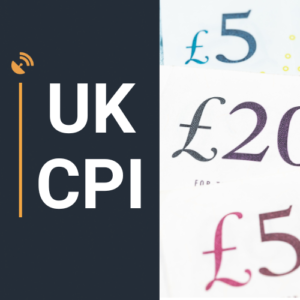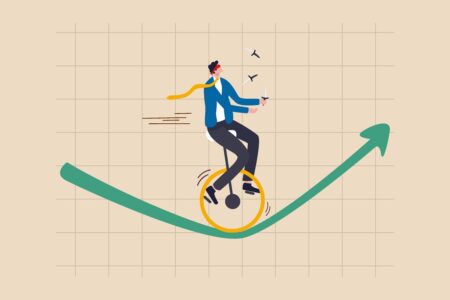The Education Department formally launched a long-awaited student loan forgiveness tracking feature this week for income-driven repayment plans, providing borrowers with specific details on their progress for the first time in the program’s 30-year history.
Income-driven repayment, or IDR, plans allow borrowers to repay their federal student loans using a formula applied to their income and family size. Payments are calculated for 12-month increments, and then must be periodically recalculated based on changes to income. Under current law, any remaining balance after 20 or 25 years would normally be forgiven; this is true under all IDR plans including Income-Contingent Repayment, Income-Based Repayment, Pay-as-you-Earn, and the Saving on a Valuable Education plan. These plans are typically known by their acronyms — the ICR, IBR, PAYE, and SAVE plans, respectively (and SAVE replaced the earlier Revised Pay As You Earn, or REPAYE, plan).
Until now, borrowers had no way of tracking their IDR loan forgiveness progress, and no way of officially knowing how much IDR credit they already have, or how much time is left on their repayment term. But this week, the department formally published detailed IDR tracking information for every borrower, allowing them to know exactly where they are on their student loan forgiveness timeline.
Here’s what borrowers should do now.
Check IDR Student Loan Forgiveness Tracker, Which Mirrors PSLF Tracker
The IDR student loan forgiveness tracking information is available via borrowers’ StudentAid.gov account. To access your account, you’ll need your FSA ID (a unique username and password), which you should not share with anyone.
Once logged in, your IDR tracker should be visible on your StudentAid.gov dashboard. The tracker will show the number of IDR payments made so far, and the number of IDR payments remaining before the borrower would qualify for loan forgiveness. For IDR terms of 20 years, the total number of payments required to qualify for loan forgiveness would be 240. For IDR terms of 25 years, the total number of payments required to qualify for loan forgiveness would be 300.
Clicking on the IDR tracker should allow borrowers to access more detailed information on their status. This includes a progress bar, which provides a helpful visualization of student loan forgiveness progress, as well as a projected student loan forgiveness date (assuming there are no gaps or non-qualifying periods between now and then). Borrowers can also open up a detail page which will show month-by-month breakdowns of what is qualifying toward IDR loan forgiveness.
The features mirror the PSLF Tracker, which was launched last summer at StudentAid.gov for the Public Service Loan Forgiveness program. Like the new IDR tracker, the PSLF Tracker includes a progress bar, a projected student loan forgiveness date, and a detailed month-by-month breakdown of qualifying payments.
Retain Records Of Your IDR Student Loan Forgiveness Tracker
Just like with PSLF, it’s a good idea to retain records of your IDR loan forgiveness progress reflected in the tracker. While you may never need them, if something happens to your account, or features on the website subsequently change, it may be important to have a record of the information that is displayed.
The easiest way to keep records of your IDR loan forgiveness tracker would be via screenshots or converting the webpages into PDF images. You then save them to your computer (make sure to backup your files), print them out as hard copies, or both. Be sure to do this not only for the tracking summary, but also for the loan forgiveness progress bar, the projected loan forgiveness date, and the month-by-month breakdown of qualifying payments. It’s generally a good idea to do this at least once per year; you can use your IDR annual income recertification date as a reminder to yourself to also download your IDR loan forgiveness tracking records. But you can also do this more frequently if you want.
Switch To An IDR Plan To Continue Toward Student Loan Forgiveness
Borrowers do not presently need to be in an IDR plan to have received IDR credit or to be able to view their IDR progress at StudentAid.gov. But to continue to progress toward eventual student loan forgiveness, borrowers would need to enroll in an IDR plan.
The ICR, IBR, PAYE, and SAVE plans are all very different, with distinct repayment plan formulas and eligibility rules. Importantly, the SAVE plan remains blocked due to a court order, and could get struck down in the coming months. The PAYE plan is often the next-most affordable IDR plan after SAVE, but it has disbursement date restrictions that may prevent certain borrowers from being able to enroll. In addition, both PAYE and IBR have “partial financial hardship” requirements that only permit borrowers to enroll if their initial calculated income-driven monthly payment amount is less than what they would have to pay under a traditional 10-year Standard plan. You can review IDR plan eligibility criteria at StudentAid.gov.
Borrowers In SAVE Plan Forbearance Should Consider Options For Resuming Student Loan Forgiveness Progress
Borrowers who are stuck in the SAVE plan forbearance as a result of the ongoing legal challenge should still be able to check their IDR loan forgiveness tracker at StudentAid.gov. However, the time spent in the SAVE plan forbearance does not count toward student loan forgiveness for either IDR or PSLF. So no months will be credited toward loan forgiveness starting in August 2024, which is when the SAVE plan injunction first went into effect, through the present.
In addition, the Education Department is blocked by the court order from providing any student loan forgiveness not only for borrowers enrolled in SAVE, but also those enrolled in the PAYE and ICR plans — even if they reach the 20- or 25-year threshold. That’s because PAYE and ICR were created using the same legal authority as the SAVE plan.
“Forgiveness as a feature of any IDR plan created by the Department is currently enjoined,” says the department in formal guidance. “That includes the SAVE (formerly REPAYE), PAYE, and ICR repayment plans.” Importantly, student loan forgiveness under IBR is not subject to a legal challenge, and therefore is not enjoined.
“Borrowers who reach their plan’s repayment milestone—that is, 25 years in repayment for borrowers on any of these plans or 20 years for borrowers in PAYE or undergraduate-only borrowers in SAVE—will be moved into an interest-free forbearance, if they are not already in a forbearance as a result of the litigation,” says the department.
Borrowers who are stuck in the SAVE plan forbearance and are nearing the end of their student loan forgiveness term for either IDR plans or PSLF may want to consider changing to a different repayment plan. The department recently reopened the ICR and PAYE plans (which were originally closed following the implementation of SAVE), and has resumed IDR application processing after a months-long pause.
Read the full article here
















